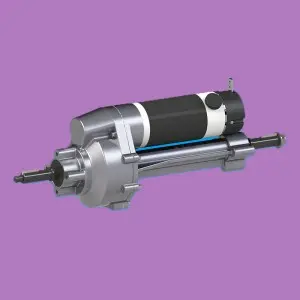Mobility scooters have revolutionized the lives of people with mobility impairments, providing them with a new sense of freedom and independence. At the heart of these devices is a complex mechanism called a transaxle, which plays a vital role in the overall functionality of the e-scooter. In this blog post, we take a closer look at the inner workings of a mobility scooter transaxle to understand how it operates and ensure a seamless riding experience.
Learn the basics:
Before we delve into the functionality of a mobility scooter transaxle, let’s first understand the basic concepts of a transaxle. The transaxle combines the functions of a transmission and an axle, providing power transfer from the electric motor to the wheels while allowing wheel speed differentials during cornering. Essentially, it acts as the driving force behind the mobility scooter, ensuring that the power generated by the motor is efficiently transferred to the wheels.
Components of mobility scooter transaxle:
Scooter transaxles are made up of several key components that work in harmony for optimal performance. These components include:
1. Motor: The motor serves as a power source and generates the mechanical energy required to drive the scooter. It provides rotational power which is then transmitted to the transaxle for further distribution.
2. Gears and Shafts: The transaxle contains complex gears and shafts designed to optimize power transmission. These gears and shafts work together to vary the RPM and torque produced by the motor, ultimately driving the wheels at the desired speed.
3. Differential: The differential is a key component of the transaxle, which enables the scooter to operate smoothly. When turning, the inside wheel and the outside wheel travel different distances. The differential compensates for this change by allowing the wheels to rotate at different speeds. This ensures minimal pressure on the wheels and provides a smooth steering experience.
4. Bearings and Seals: As with any mechanical system, bearings and seals play a vital role in reducing friction and ensuring longevity. These components provide support and allow for smooth rotational movement, minimizing energy loss and maximizing efficiency.
working principle:
Now that we have a good grasp of these components, let’s explore how these elements come together to make an e-scooter transaxle work:
1. Electricity generation: When the user presses the accelerator on the scooter, electricity is sent to the motor. The motor then converts electrical energy into mechanical energy, producing rotational force.
2. Power transmission: The generated rotational force is transmitted to the transaxle through a series of gears and shafts. These gears help modify speed and torque, ensuring smooth acceleration and improved control.
3. Speed control: The scooter transaxle adopts a speed control mechanism, allowing users to adjust the speed according to their own requirements. The system enables users to navigate seamlessly across a variety of terrains and environments.
4. Differential action: When turning, the wheels of the scooter travel different distances at different speeds. A differential within the transaxle compensates for this difference, ensuring smooth handling without stressing or adding stress to the wheels.
The scooter transaxle is the backbone of these innovative devices, converting the electrical energy generated by the motor into rotational force that propels the wheels forward. With its complex system of gears, shafts and differentials, it allows for efficient power transmission and smooth handling. Understanding the inner workings of a mobility scooter transaxle gives us a deeper appreciation for the marvel of engineering and the freedom it affords people with mobility impairments.
Post time: Nov-29-2023


